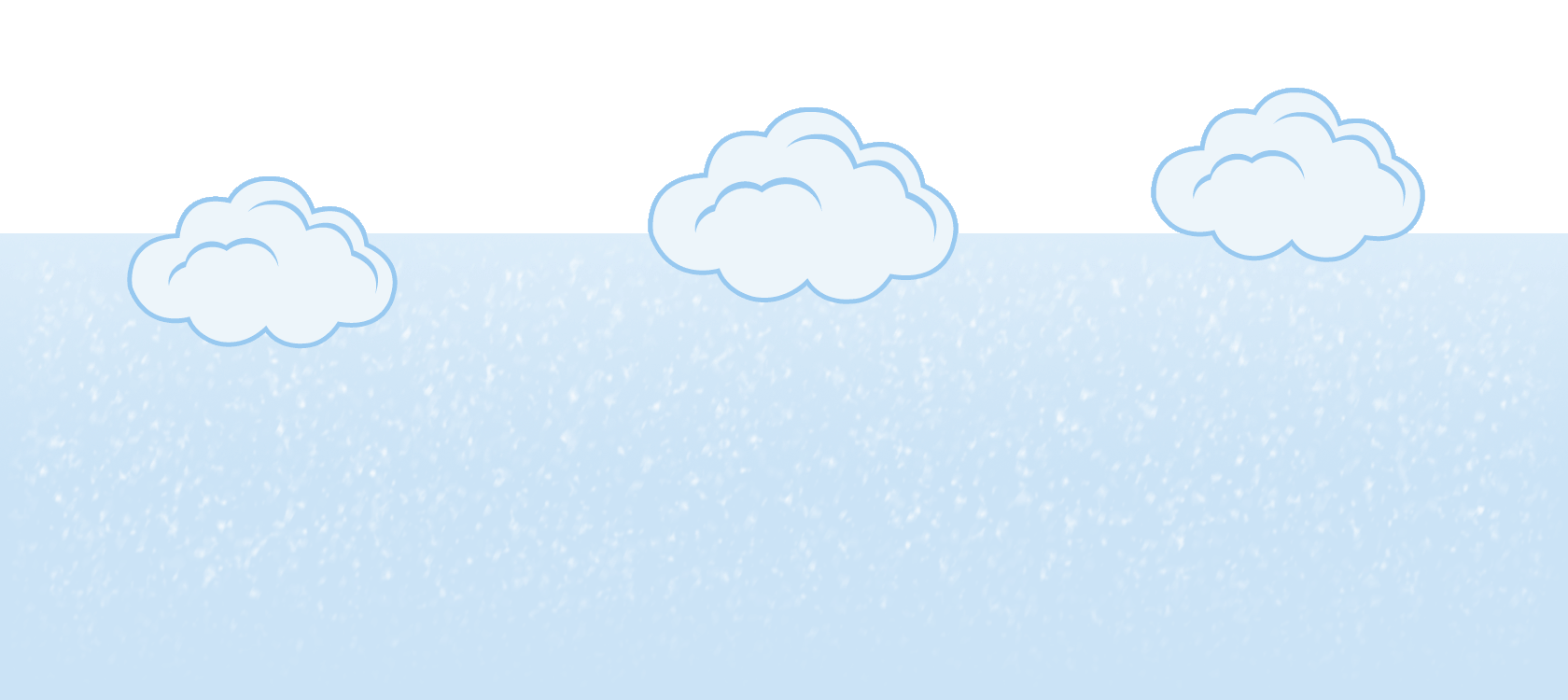In this issue, we explore the concept that life on Earth depends on climate. We’ve highlighted lessons that help students develop an understanding that living things are adapted to survive in specific environments. The books featured here support that idea. We’ve also included books about migration (a behavioral adaptation) as well as how fossils can help us make inferences about past environments.
ORGANISMS AND THEIR ENVIRONMENTS
In addition to the books listed below, you may want to use titles from the Beyond Penguins and Polar Bears virtual bookshelves about specific mammals, birds, and plants.
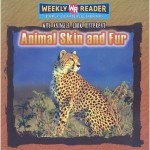 Animal Skin and Fur. Jonatha A. Brown. 2007. Why Animals Look Different series (Weekly Reader Early Learning Library). Nonfiction. Grades K-3.
Animal Skin and Fur. Jonatha A. Brown. 2007. Why Animals Look Different series (Weekly Reader Early Learning Library). Nonfiction. Grades K-3.
This accessible series tells how wild animals’ fur, skin or feathers keep them warm or cool, moist or dry, camouflaged or protected and allow them to survive in their unique environments. Several species are included, from bears to lizards, and each animal described is shown in its environment. Glossary and index.
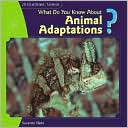 What Do You Know About Animal Adaptations? Susan Slade. 2008. Nonfiction. Grades 2-4.
What Do You Know About Animal Adaptations? Susan Slade. 2008. Nonfiction. Grades 2-4.
The author poses 20 questions –generally one per page—related to animals’ behavioral and physical adaptations to their environments. What happens when an animal hibernates? How do animals find their way when they migrate? and so forth. Along with answers to the page’s questions, there are photos of representative animals and brief facts about the pictured animal. Glossary and index.
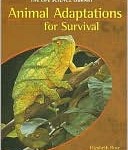 Animal Adaptations for Survival. Elizabeth Rose. 2006. Nonfiction. Grades 4 and 5.
Animal Adaptations for Survival. Elizabeth Rose. 2006. Nonfiction. Grades 4 and 5.
The author focuses on the process by which animals have adapted behavior and physical attributes over long periods so they can survive. She notes that, by the process of evolution and natural selection, those that cannot adapt die out. Among today’s survivors, she includes animals that migrate, often developing great speeds, animals that have effective camouflages for hiding from predators or for hunting prey themselves, and others that adapted to extreme temperatures. The 24-point body text fills the pages; photo captions are in a smaller type size. Index and glossary with pronunciation.
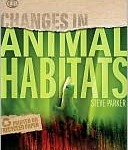 Changes in Animal Habitats. Steve Parker. 2009. Nonfiction. Grades 4 and 5.
Changes in Animal Habitats. Steve Parker. 2009. Nonfiction. Grades 4 and 5.
The problems facing animal species around the world are examined in this book. The author includes the increasing size of people populations and their drain on resources, changes in land use and habitat destruction, and pollution as threats to wildlife. He identifies some actions people can take – planting trees, using less fuel, supporting captive breeding programs, volunteering at nature reserves. Glossary and index.
MIGRATION
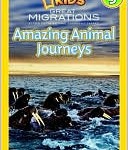 Amazing Animal Journeys. Laura Marsh. 2010. Nonfiction. Grades K-3.
Amazing Animal Journeys. Laura Marsh. 2010. Nonfiction. Grades K-3.
With page after page of National Geographic’s trademark animal photography plus crisp text accented with brief word definitions, weird but true facts, and an occasional joke, this book has much to appeal to young readers. Migrations of zebras, red crabs, and walruses are featured. The book ends with examples of actions people have taken to protect these animals in their extreme migrations. The glossary is illustrated with more photographs.
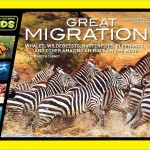 Great Migrations. Elizabeth Carney. 2010. Nonfiction. Grades 3-6.
Great Migrations. Elizabeth Carney. 2010. Nonfiction. Grades 3-6.
The subtitle of this National Geographic Kids book names the migrators included in this coverage of the shortest and longest great migrations –“Whales, Wildebeests, Butterflies, Elephants, and other Amazing Animals on the Move.” The 8 x 11 format allows horizontal double-page photographs of moving animals. Each photo spread is followed by two pages of facts presented in distinctive blocks of type with maps and diagrams. The book is based on the filming of a television feature on animal migrations. Index.
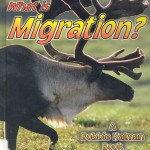 What Is Migration? Bobbie Kalman. 2002. Nonfiction. Grades 3-6.
What Is Migration? Bobbie Kalman. 2002. Nonfiction. Grades 3-6.
The author covers more than a dozen animals and their different reasons for migrating: salmon spawn, Canada geese want mild temperatures, and turtles are drawn to their birthplace to lay eggs. She points out the ties to weather factors, like lack of food in winter, for some animal migrations, but also notes other animals that emigrate (lemmings) or are constant movers (army ants). The book ends with devices people use to study migrations by tagging and tracking animals. Glossary and index.
FOSSILS
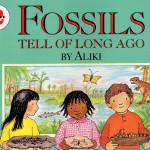 Fossils Tell of Long Ago. Aliki. 1990. Nonfiction. Grades K-3.
Fossils Tell of Long Ago. Aliki. 1990. Nonfiction. Grades K-3.
In this revised edition of her 1984 book, Aliki continues the conversational observations of a group of children as they make discoveries in a museum, marveling at and enjoying the bits of history cast in stone. In clear, precise language, she explains how dinosaur tracks are cast in mud, how insects trapped in sticky tree sap harden into amber, and how fossils of tropical plants are found in very cold places. The book closes with a suggestion for creating a fossil by making a clay imprint of a hand, letting it dry, and burying it for someone to find a million years from now.
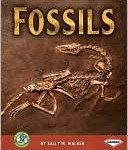 Fossils. Sally M. Walker. 2007. Nonfiction. Grades 3-5.
Fossils. Sally M. Walker. 2007. Nonfiction. Grades 3-5.
Readers learn how shells, fish, leaves, footprints, trees, and even mammoth hair are turned into fossils. The difference between fossil casts and molds is explained. The final two chapters discuss the difficulty of finding certain types of fossils and why scientists study fossils – one important reason being that fossils give clues to climate and weather changes on Antarctica and other continents.
 If You are a Hunter of Fossils. Byrd Baylor. Illustrated by Peter Parnall.
If You are a Hunter of Fossils. Byrd Baylor. Illustrated by Peter Parnall.
Millions of years have passed since the desert was ocean, but the fossils still tell its story. And if you are lucky enough to find one, the ancient past can come back to flood your imagination.
This article was written by Kate Hastings, a youth librarian at the Upper Arlington Public Library near Columbus, Ohio. Email the author at beyondweather@msteacher.org.
Copyright May 2011 – The Ohio State University. This material is based upon work supported by the National Science Foundation under Grant No. 1034922. Any opinions, findings, and conclusions or recommendations expressed in this material are those of the author(s) and do not necessarily reflect the views of the National Science Foundation. This work is licensed under an Attribution-ShareAlike 3.0 Unported Creative Commons license.
